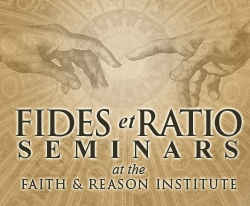Of Pilgrimages and Synodality
It could almost be a riddle: What’s the difference between a pilgrimage and synodality? Almost. There’s a long, legitimate place for synods in the life of the Church (“synodality,” by contrast, is quite a different and doubtful thing, since no one seems to be able to say what it is, or isn’t, other than more people talking). So, there need not be an opposition, much less a division, between a synod and the equally legitimate – and even longer – tradition of pilgrimage. But nota bene: in this man’s view, if you want real “walking together,” it’s best found on foot, body and soul on the way together – in the midst of God’s Creation – rather than sitting and talking, for hours, days, weeks, a month around tables in a large conference hall.
A pilgrimage has the further advantage of a journey to a specific destination for a clear purpose, not a perpetual “process.” Jesus, Mary, and Joseph made the pilgrimage to Jerusalem together at least once (that we know of) when the boy Jesus was lost and later found in the Temple with the learned rabbis. (Luke 2:41-49) In His day, Jewish men – following an already centuries-old tradition – were supposed to make the pilgrimage to Jerusalem three times a year (Passover, Pentecost, Sukkoth). That’s what he was also doing when He presented Himself to be crucified.
People go on pilgrimage for all sorts of reasons. Besides the Jews, even ancient Greeks and Romans made pilgrimages to places like Delphi or Epidaurus (the Lourdes of the classical world). There’s Mecca, of course, for Muslims. And Buddhist and Hindu sites all over Asia. There’s something about this impulse to leave home – not permanently, but on a journey that will take you to a “home” of a different order than the everyday one, from which – if all goes well – you bring back something that enhances, even reveals unsuspected depths in your ordinary dwelling place.



